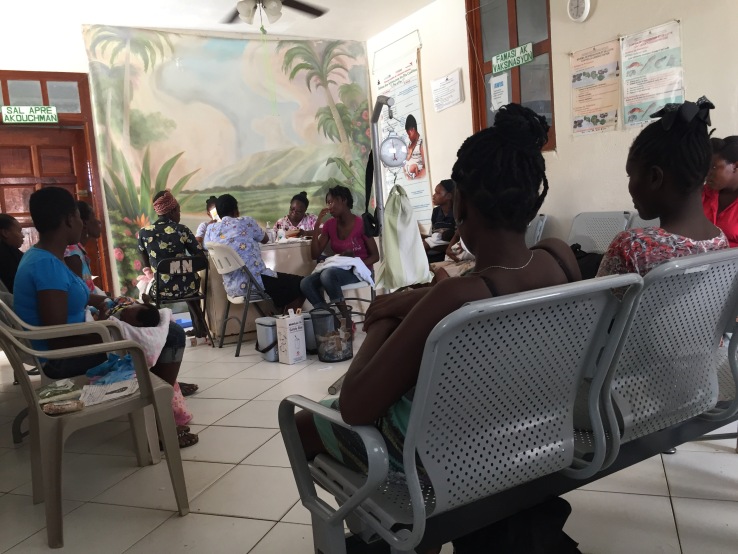The ride to Jacmel was incredible. After about 2 hours on the “highway” back towards Port Au Prince, I was dropped off by our driver Zo and met by another, Komandan. I’d been texting with him in Creole (thanks to google translate) to coordinate this meet up, which often makes for a confusing moment when I have to communicate that I do not, in fact, speak Creole at all. I climbed into Komamdan’s truck for the last 40km to Jacmel, on twisting roads through the mountains with grand vistas of ocean, sky, and clouds. The sunset created ribbons of pink, purple, and orange, reflected over the vast ocean. Unforgettable. But not actually documented because I’m terrible at taking photos when other people can actually see me taking photos, and since I was sitting snugly in the cab of a truck between two Haitian men I’d only just met, there is no evidence of this amazing sunset.
Technically I made the drive to Jacmel on day 17 of this trip, but it’s just easier to include here.
Upon arriving to Jacmel and eating dinner with Sarah (midwife and founder of OTP) and her family, I settled in to spend my first night at the birth center since the house I’ll be staying in for the rest of the week had a minor plumbing problem. Sleeping in a patient bed is always a strange thing for me, but this was obviously nothing like an American hospital. No blinking lights from machines, no doors opening and closing incessantly, no beeps or alarms. Just a fan- that turned off at 4am when the power went out- and mosquitoes.
The clinic day started with introductions to staff. There are two Haitian midwives at OTP. They completed their midwifery raining in Senegal, which was made possible by post-earthquake education grants (a great way to sustainably contribute to any relief efforts). There are also a few nurses and auxiliaires, cleaning and cooking staff, an administrator, and of course the two lead midwives, including Sarah. There were a few prenatal appointments first thing, which I observed, and then a prenatal class. Eight women attended to learn all about the basics of birth, including the physiology, the hormones, the stages, and of course when to call. After the hour-long class, a few women stuck around for their appointments.
OTP has a really wonderful philosophy of care. Sarah sort of stumbled into midwifery and has created a center to compassionately care for women and their families while aiming to reduce the infant and maternal mortality rate. Women are expected to attend all of their appointments and classes, and can even sign up for a Centering Pregnancy option. They must keep their appointments to birth at the center. Midwives are on call 24/7 and will transport any woman in labor to the birth center when it is time. The postpartum care schedule is thorough, because for many women those first two weeks are the hardest and when most problems arise. Women who can’t pay the 4000 gouds for all of this care (less than $70) can set up informal payment plans. Women who must be transported to the hospital but cannot afford it will somehow be covered, even if it means OTP pays for it themselves and forfeits their own fees. If a woman cannot afford to feed herself and her family, they will try to help in any way they can. Sarah tries to limit the number of patients to about 15 per month to ensure this attentive, high quality care is provided to each client.
After just one day at OTP, it is obvious that this model of care is a major boon for the Jacmel community. OTP essentially limits its own profits by capping the number of patients, but the care offered is extraordinary given the low-resource setting. Sarah’s intentions in setting up OTP was to empower women and families to thrive together, starting with pregnancy and continuing through parenting. It is a holistic, multi-dimensional approach to reducing infant and maternal mortality in Haiti, one that I hope can be simulated elsewhere.




